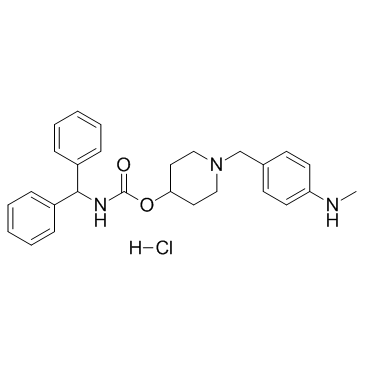mAChR
mAChRs (muscarinic acetylcholine receptors) are acetylcholine receptors that form G protein-receptor complexes in the cell membranes of certainneurons and other cells. They play several roles, including acting as the main end-receptor stimulated by acetylcholine released from postganglionic fibersin the parasympathetic nervous system. mAChRs are named as such because they are more sensitive to muscarine than to nicotine. Their counterparts are nicotinic acetylcholine receptors (nAChRs), receptor ion channels that are also important in the autonomic nervous system. Many drugs and other substances (for example pilocarpineand scopolamine) manipulate these two distinct receptors by acting as selective agonists or antagonists. Acetylcholine (ACh) is a neurotransmitter found extensively in the brain and the autonomic ganglia.
Targets for mAChR
Products for mAChR
- Cat.No. Product Name Information
-
GC37731
Talsaclidine
Talsaclidine is a muscarinic agonist with preferential neuron-stimulating properties.
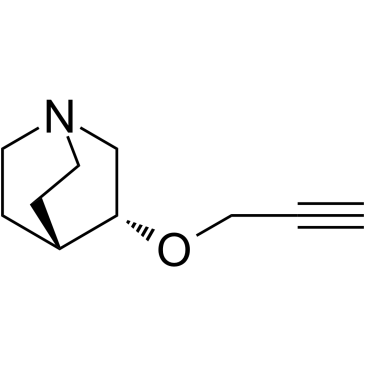
-
GC13618
Tarafenacin
M3 muscarinic receptor antagonist
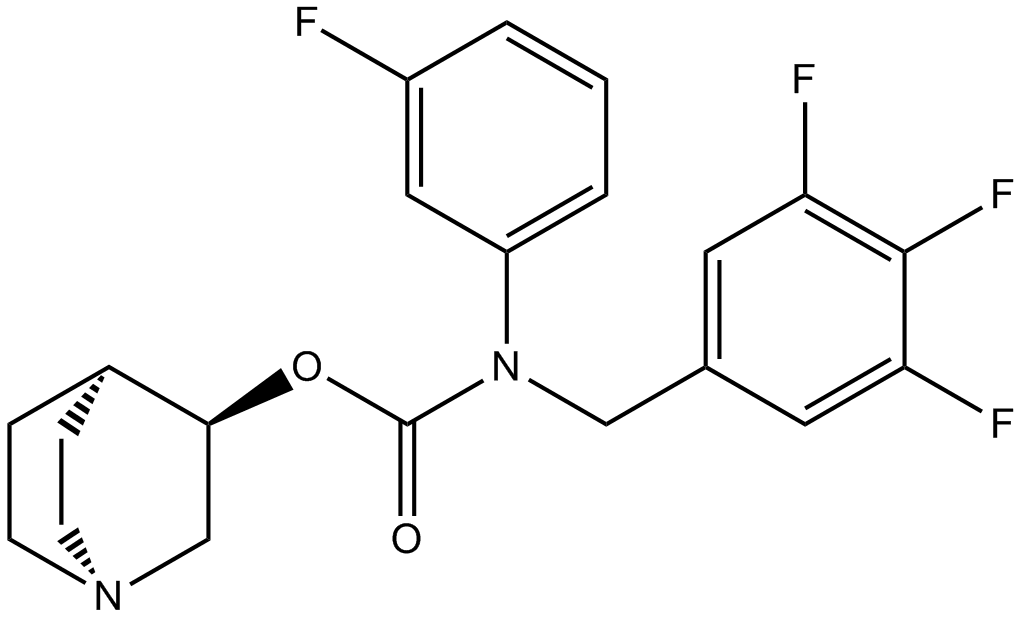
-
GC16059
Tarafenacin D-tartrate
Highly selective M3 muscarinic receptor antagonist
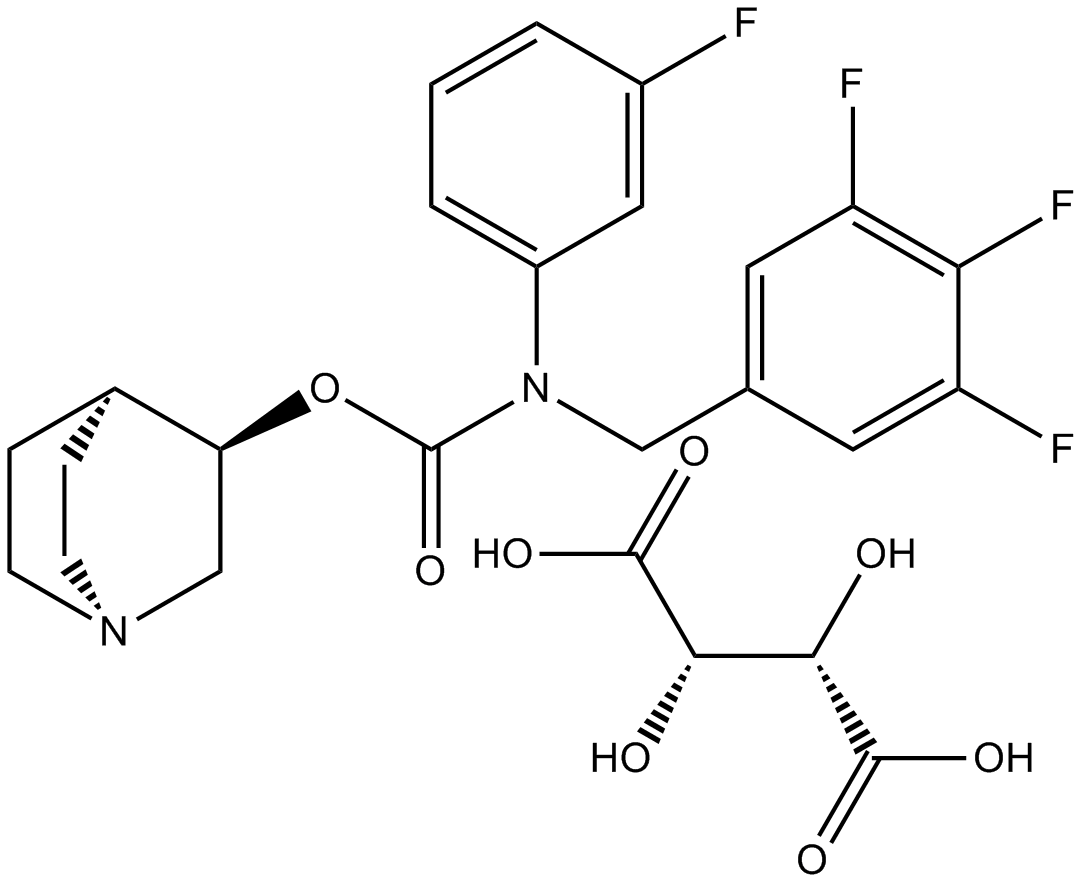
-
GC37749
TBPB
An allosteric agonist of M1 receptors
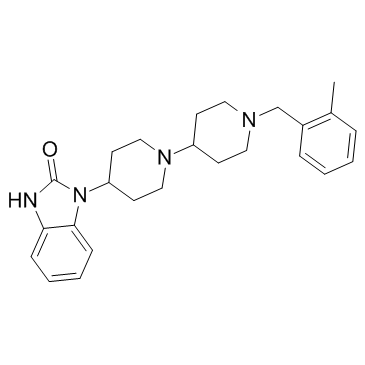
-
GC31265
Tematropium (CDDD3602)
Tematropium (CDDD3602) (CDDD3602) is a soft anticholinergics.
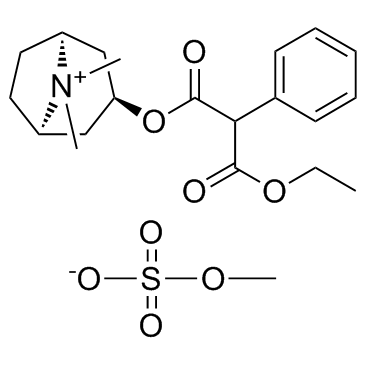
-
GC31004
Temiverine hydrochloride
Temiverine hydrochloride is a synthesized drug that is expected to have anticholinergic action.
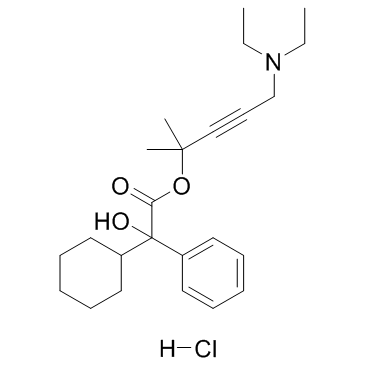
-
GC39186
Terodiline hydrochloride
Terodiline hydrochloride is an M1-selective muscarinic receptor (mAChR) antagonist with Kbs of 15, 160, 280, and 198 nM in rabbit vas deferens (M1), atria (M2), bladder (M3) and ileal muscle (M3), respectively.
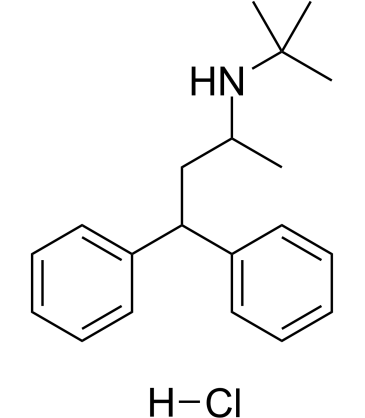
-
GC38950
Thiochrome
Thiochrome, a natural oxidation product and metabolite of thiamine, is a selective M4 muscarinic receptor of acetylcholine (ACh) affinity enhancer.
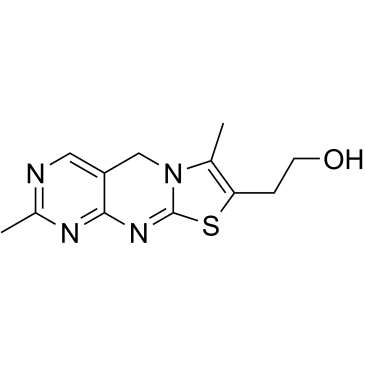
-
GC32666
Timepidium bromide (Sesden)
Timepidium bromide (Sesden) (Sesden; SA504) is an anticholinergic agent.
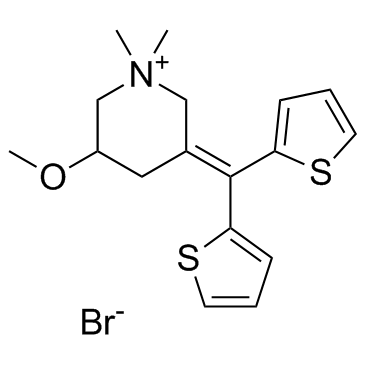
-
GC13134
Tiotropium Bromide hydrate
Muscarinic antagonist
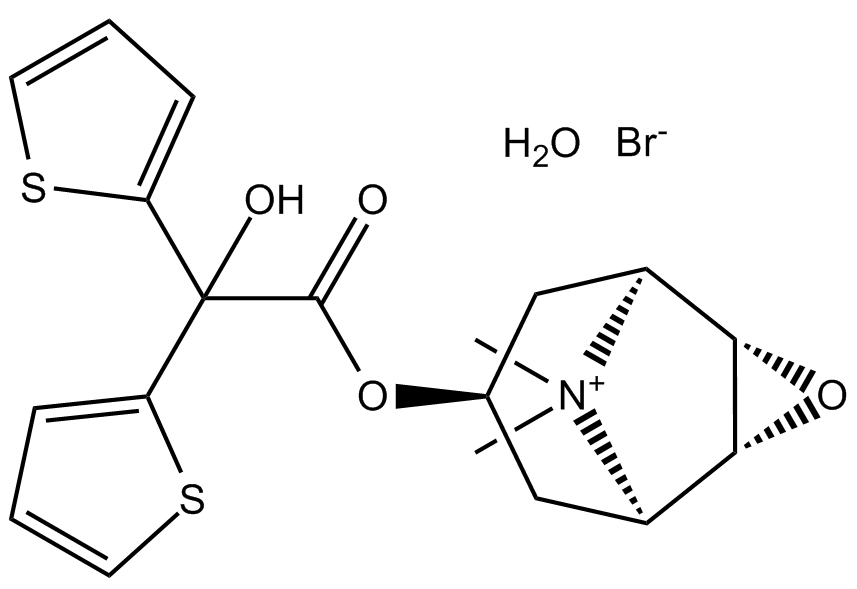
-
GC17954
Tolterodine tartrate
Competitive muscarinic receptor antagonist
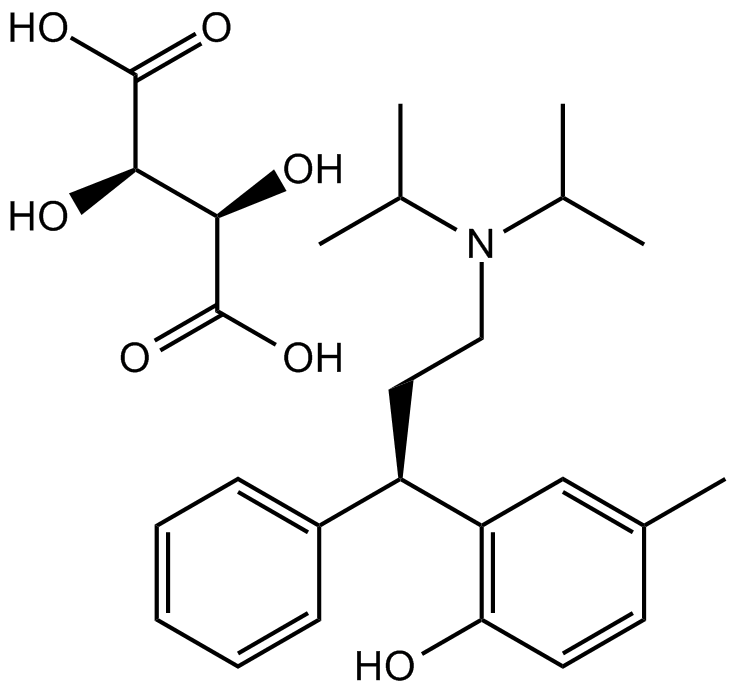
-
GC12311
Trihexyphenidyl hydrochloride
antiparkinsonian agent of the antimuscarinic class
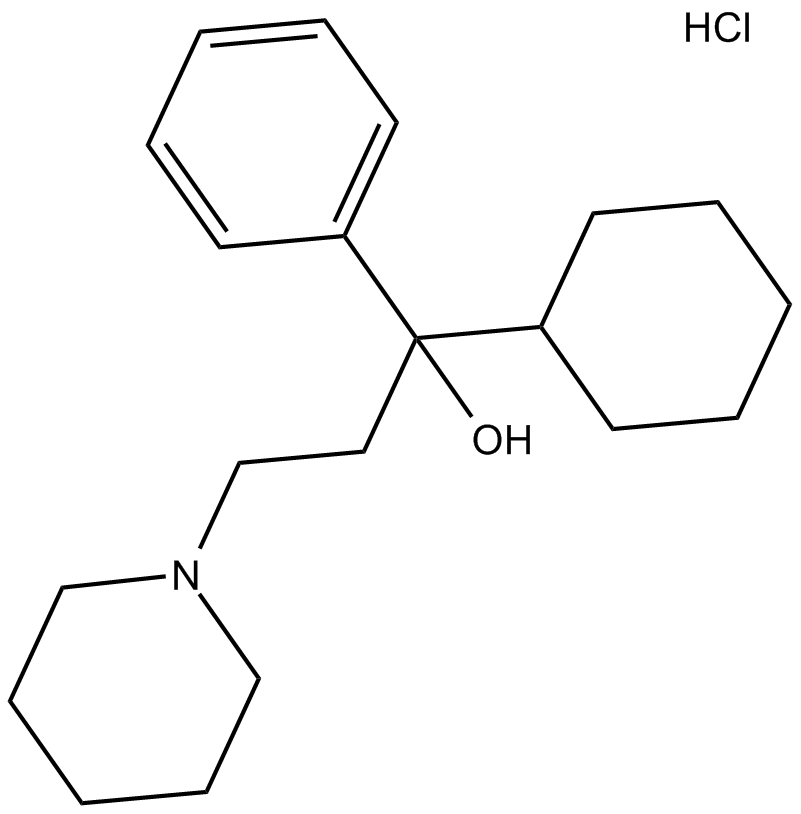
-
GC15150
Tropicamide
Antimuscarinic drug
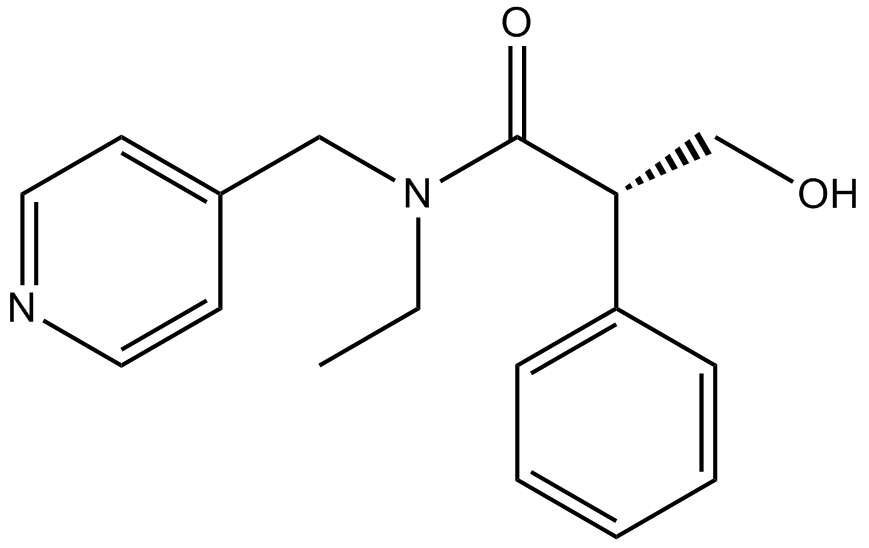
-
GC17483
Trospium chloride
Antimuscarinic agent
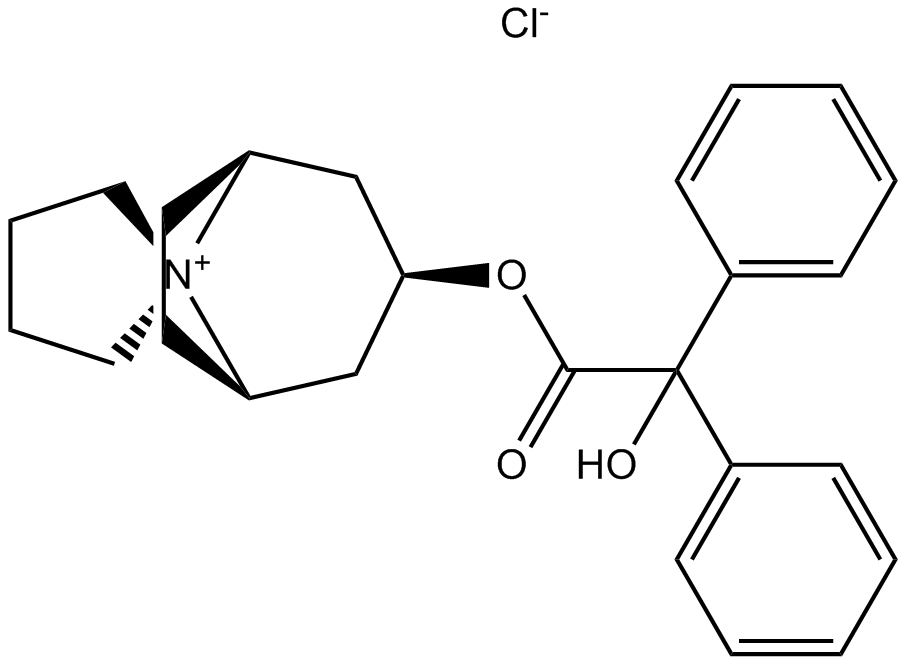
-
GC31262
Vinconate (Chanodesethylapovincamine)
Vinconate (Chanodesethylapovinc amine) is an indolonaphthyridine derivative and can stimulate the muscariic acetylcholine receptor.
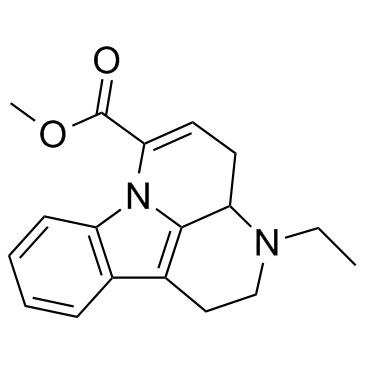
-
GC15990
VU 0238429
positive allosteric modulator of M5 receptors

-
GC16655
VU 0357017 hydrochloride
Positive allosteric modulator of muscarinic M1 receptors
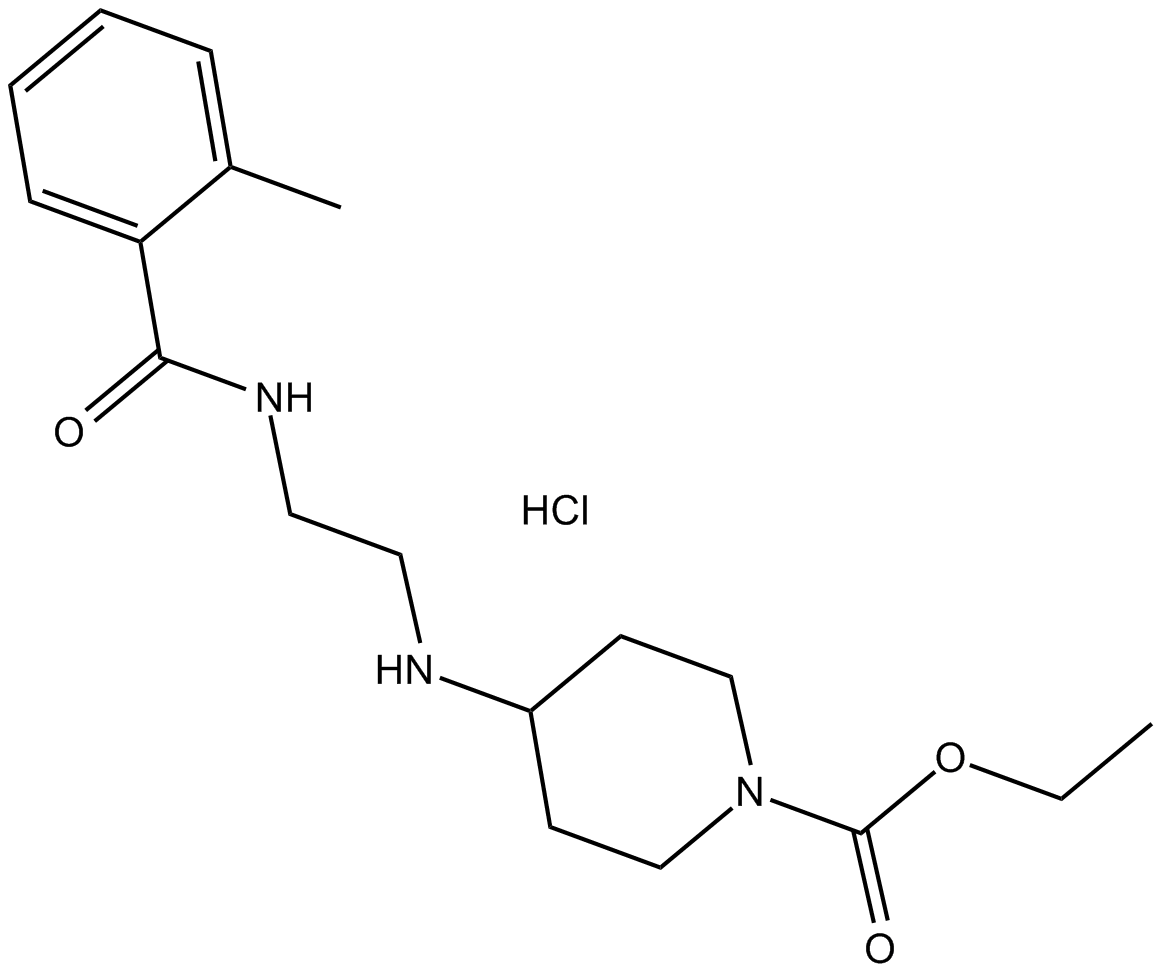
-
GC17821
VU 0365114
positive allosteric modulator of M5
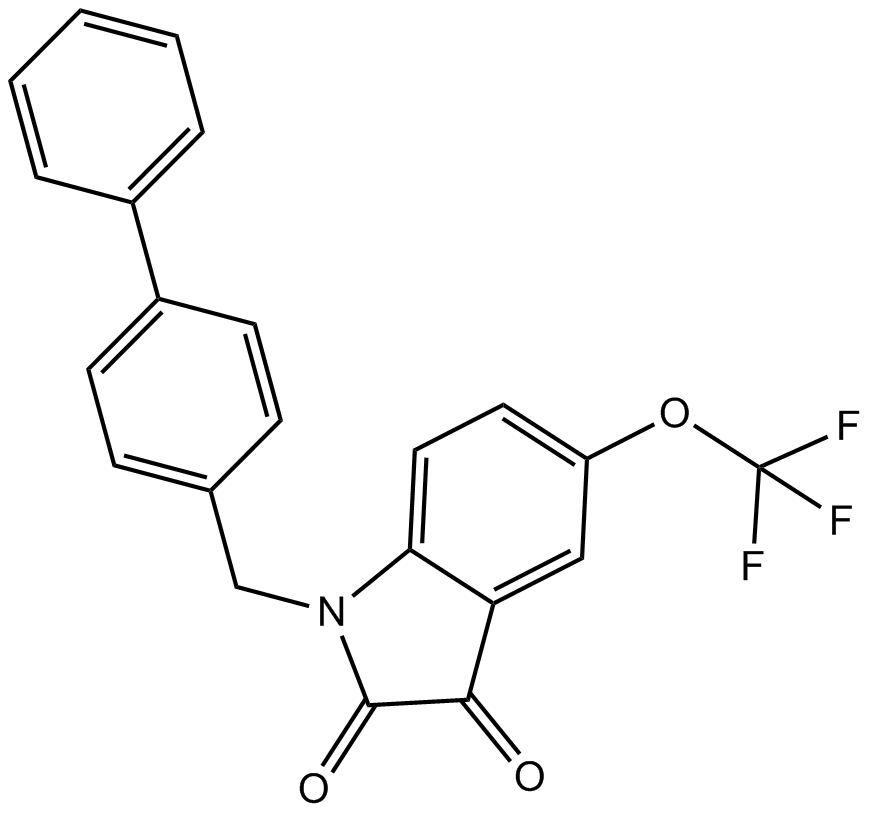
-
GC37928
VU 6008667
VU 6008667 is a selective negative allosteric modulator of M5 NAM with IC50s of 1.2 μM and 1.6 μM for human M5 and rat M5, respectively.
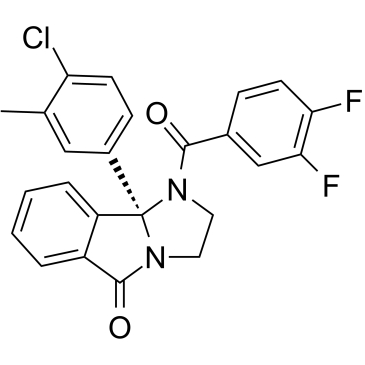
-
GC16819
VU0152100
M4 receptor allosteric modulators
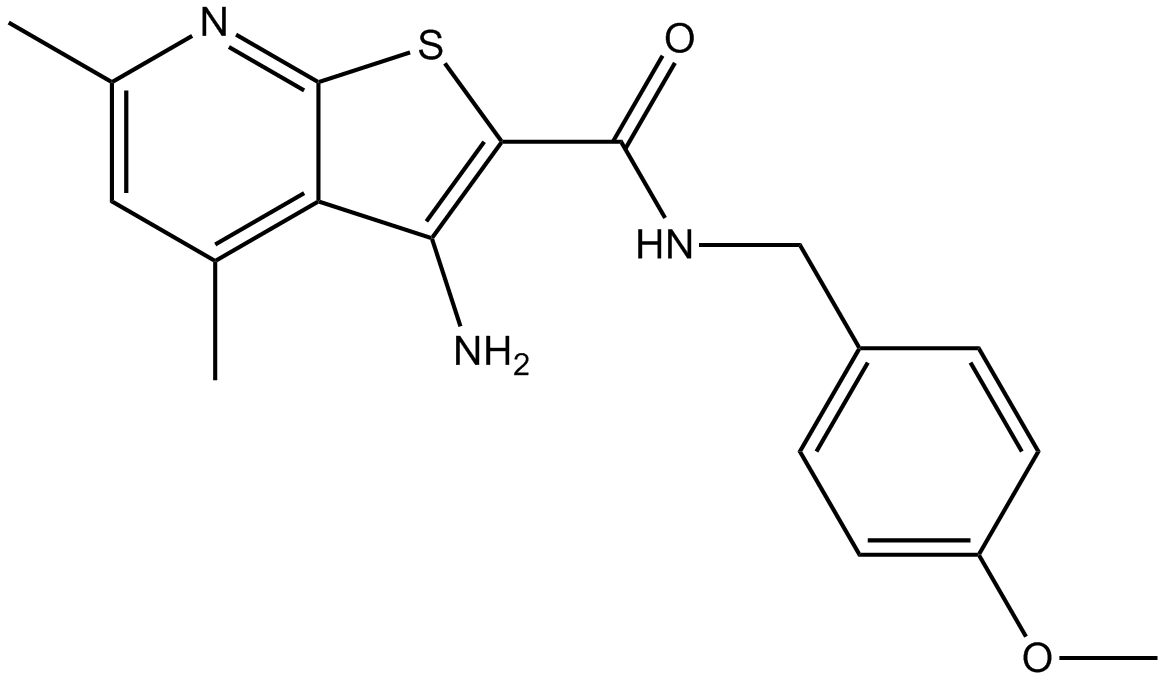
-
GC30809
VU0467154
A positive allosteric modulator of the M4 muscarinic acetylcholine receptor
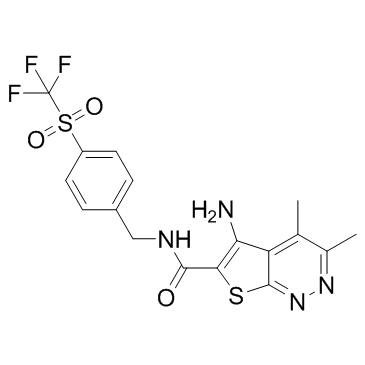
-
GC38957
VU0467485
VU0467485 (AZ13713945) is a potent, selective, and orally bioavailable muscarinic acetylcholine receptor 4 (M4) positive allosteric modulator (PAM).
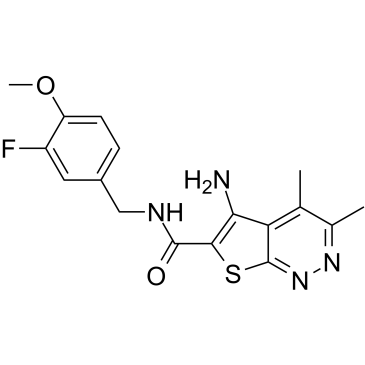
-
GC64970
VU6000918
VU6000918 is a muscarinic acetylcholine (M4) positive allosteric modulator, with an EC50 of 19 nM for hM4.
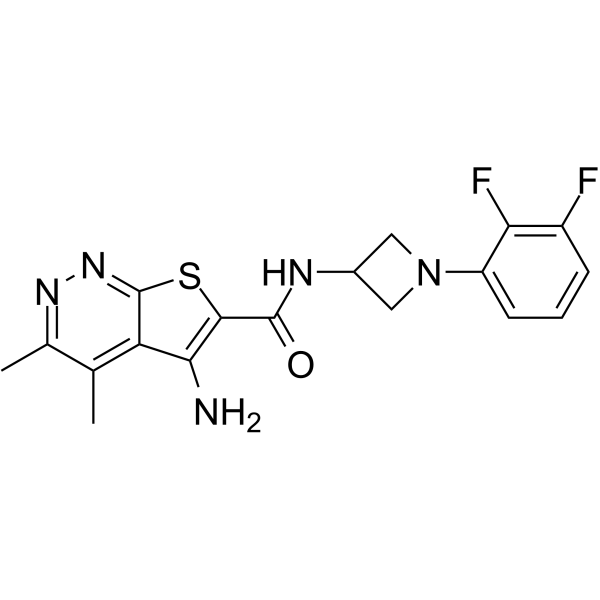
-
GC37932
VU6005806
VU6005806 (AZN-00016130) is a potent muscarnic acethylcholine receptor subtype 4 (M4) positive allosteric modulator (PAM), with EC50s of 94 nM, 28 nM, 87 nM and 68 nM for human, rat, dog and cyno M4, respectively.
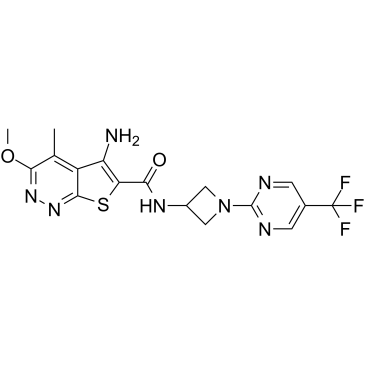
-
GC70135
VU6019650
VU6019650 is a potent and selective M5 mAChR positive allosteric modulator (IC50=36 nM) that can be used for research on alleviating opioid use disorder (OUD). VU6019650 has blood-brain barrier permeability and may regulate the mesolimbic dopamine reward circuit. VU6019650 can block the increase in firing rate of ventral tegmental area (VTA) dopamine neurons induced by Oxotremorine M iodide.
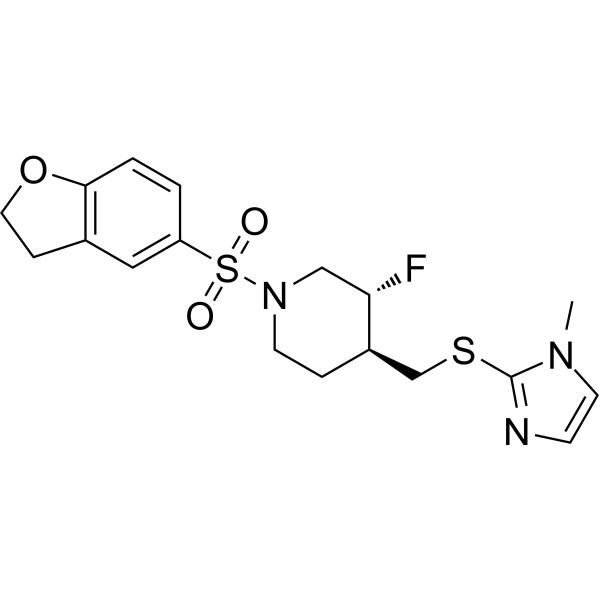
-
GC67882
VU6028418

-
GC18255
Xanomeline (oxalate)
Muscarinic receptors are G protein-coupled acetylcholine receptors that play diverse roles.
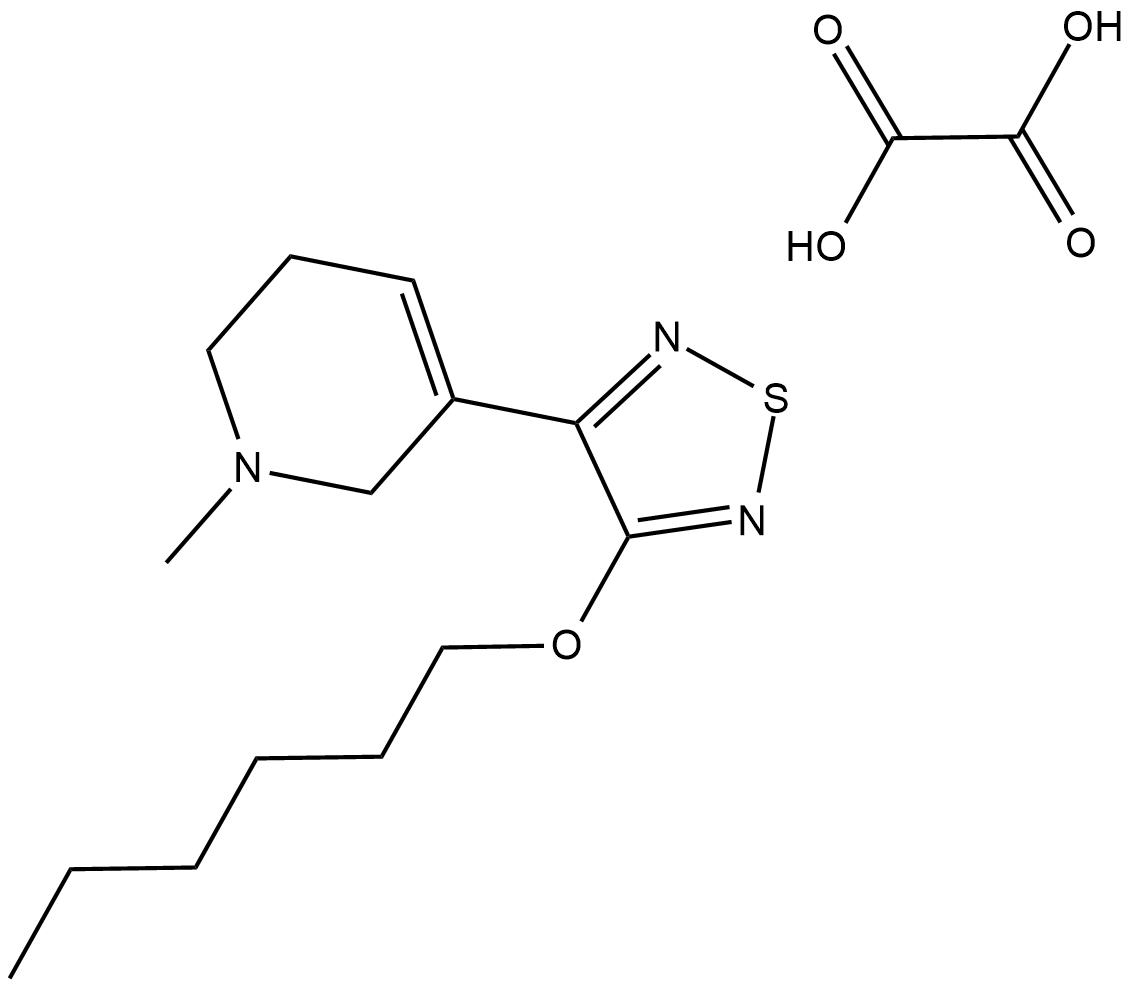
-
GC64243
Xanomeline tartrate
Xanomeline (LY 246708) is the potent agonist of muscarinic M1/M4 receptor with antipsychotic-like activity.
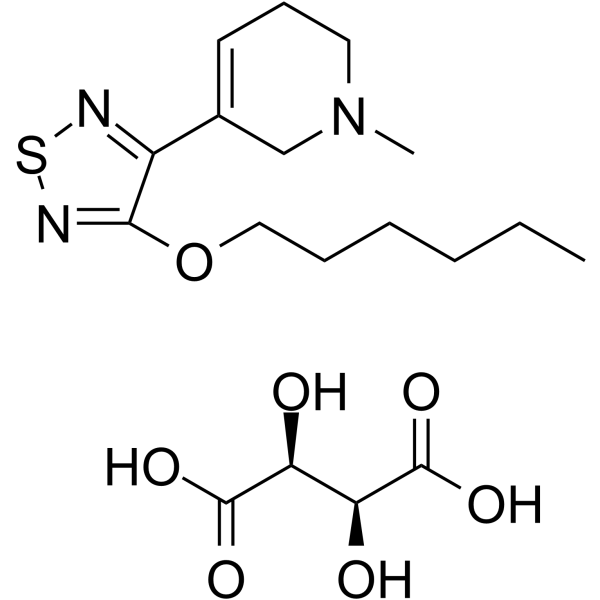
-
GC32416
YM-46303
YM-46303 is an mAChR antagonist which exhibits the highest affinities for M1 and M3 receptors, and selectivity for M3 over M2 receptor.
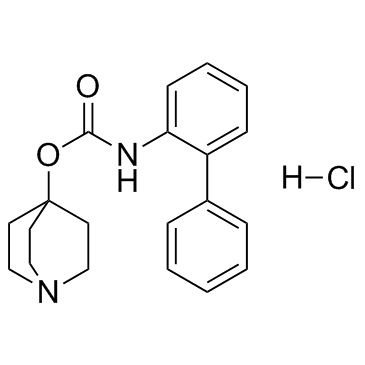
-
GC30426
YM-58790
YM-58790 is a potent antagonist of M3 muscarinic receptor, with Ki of 15 nM.
